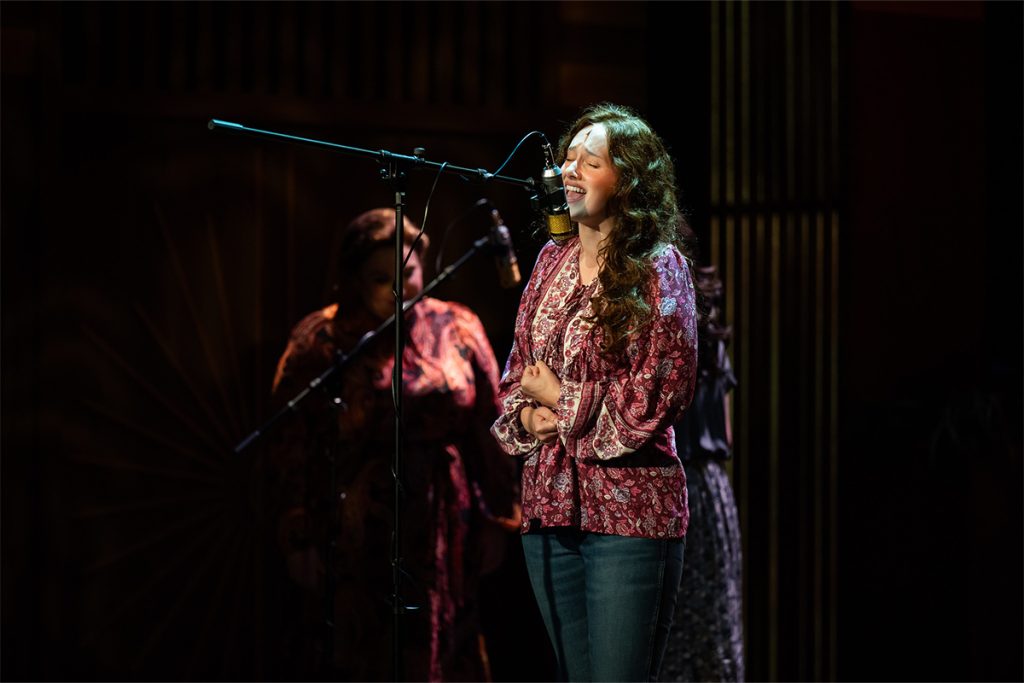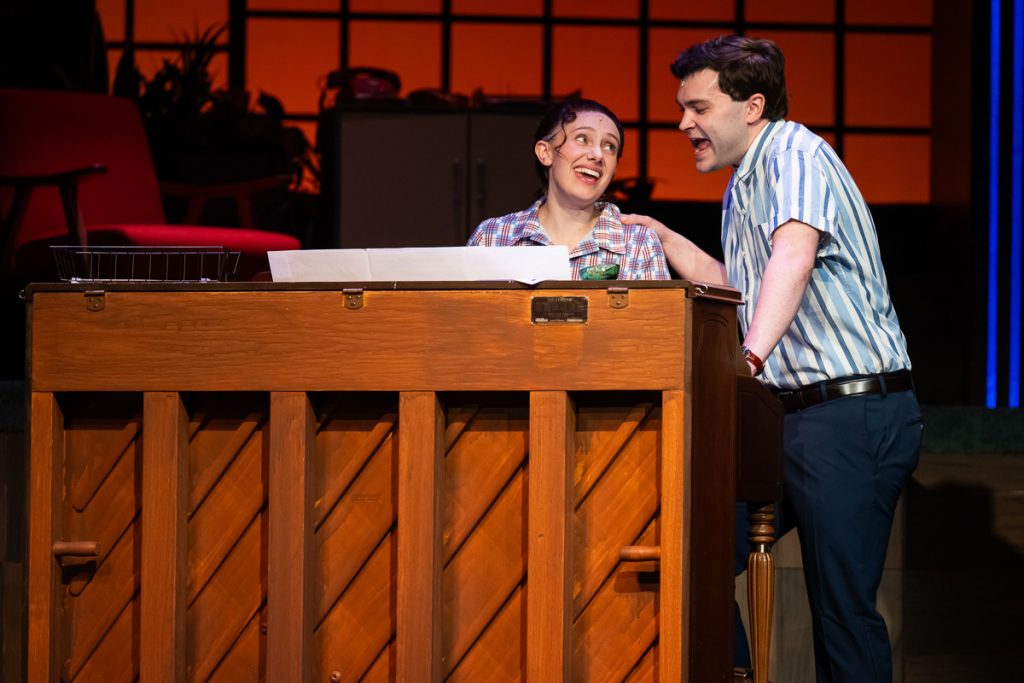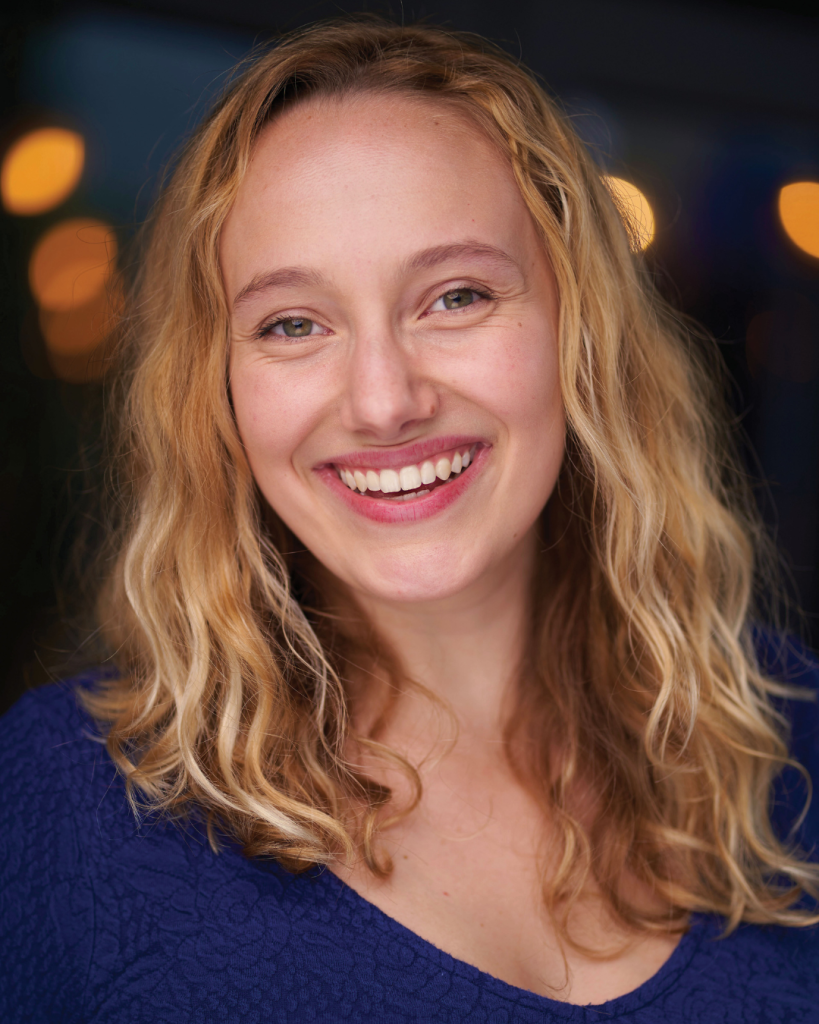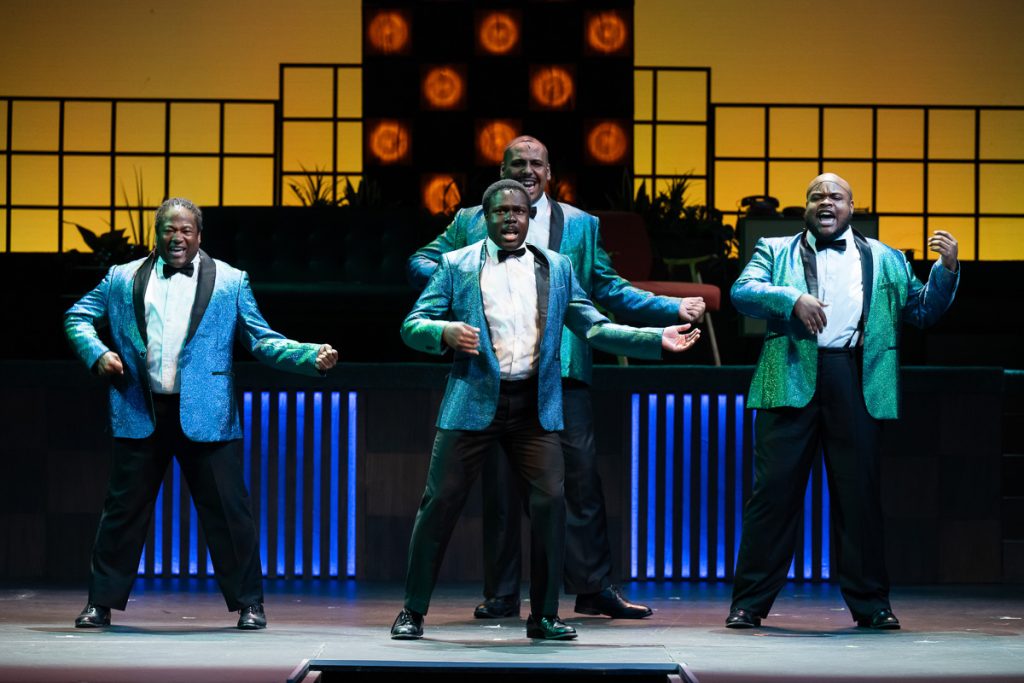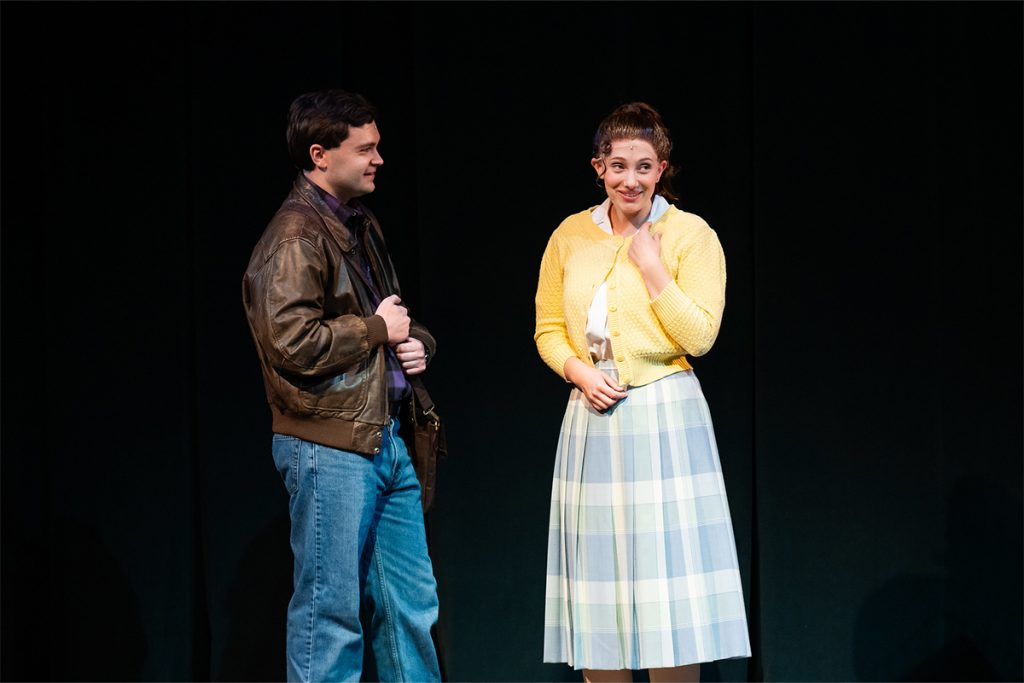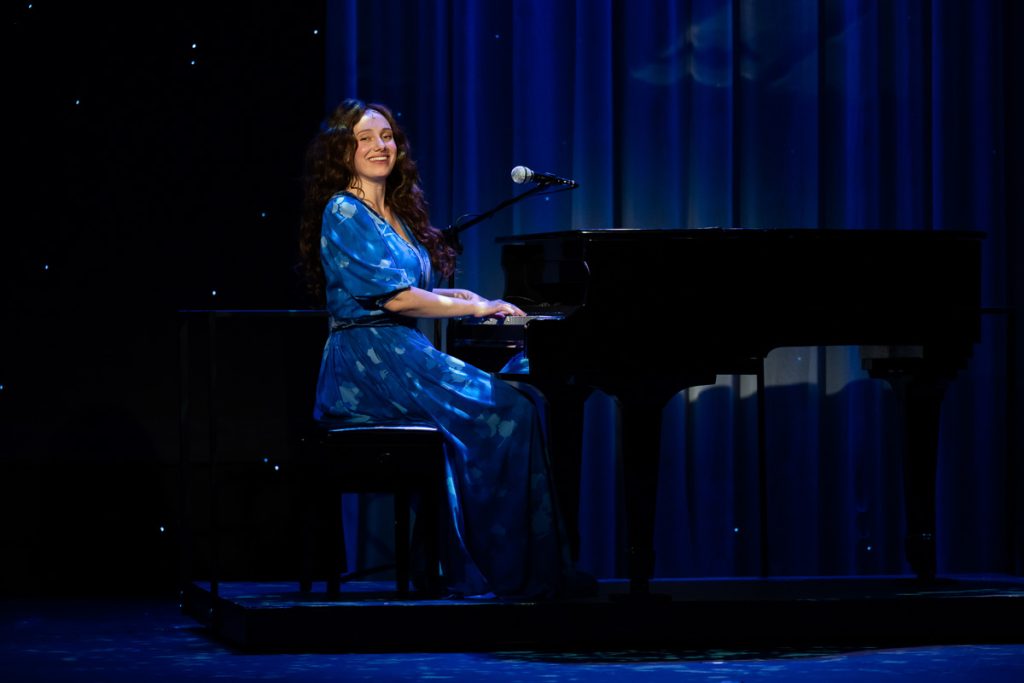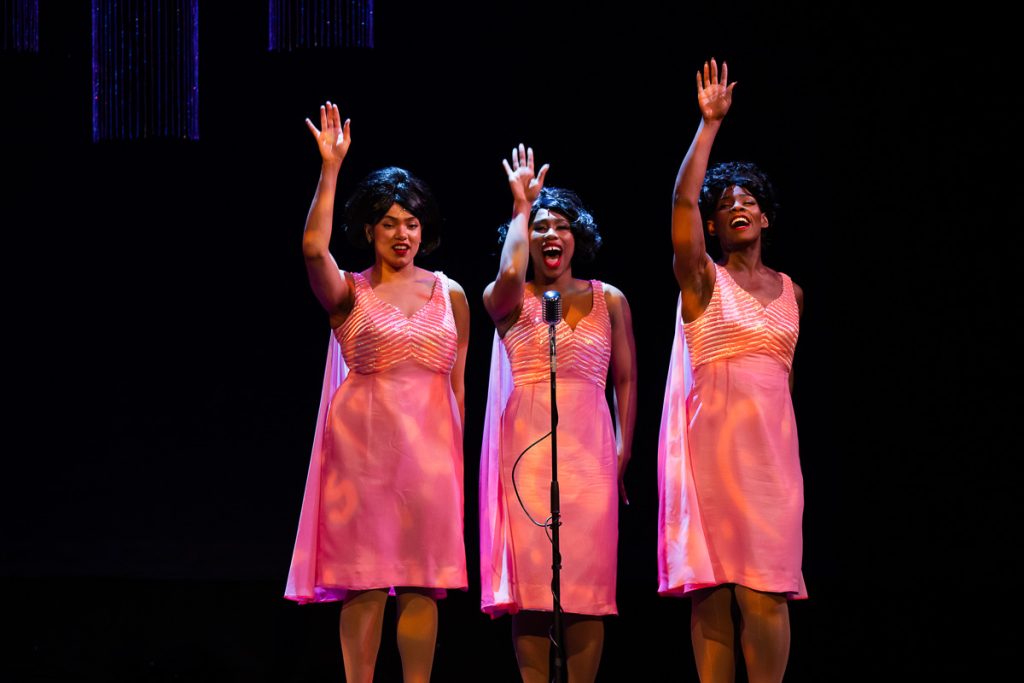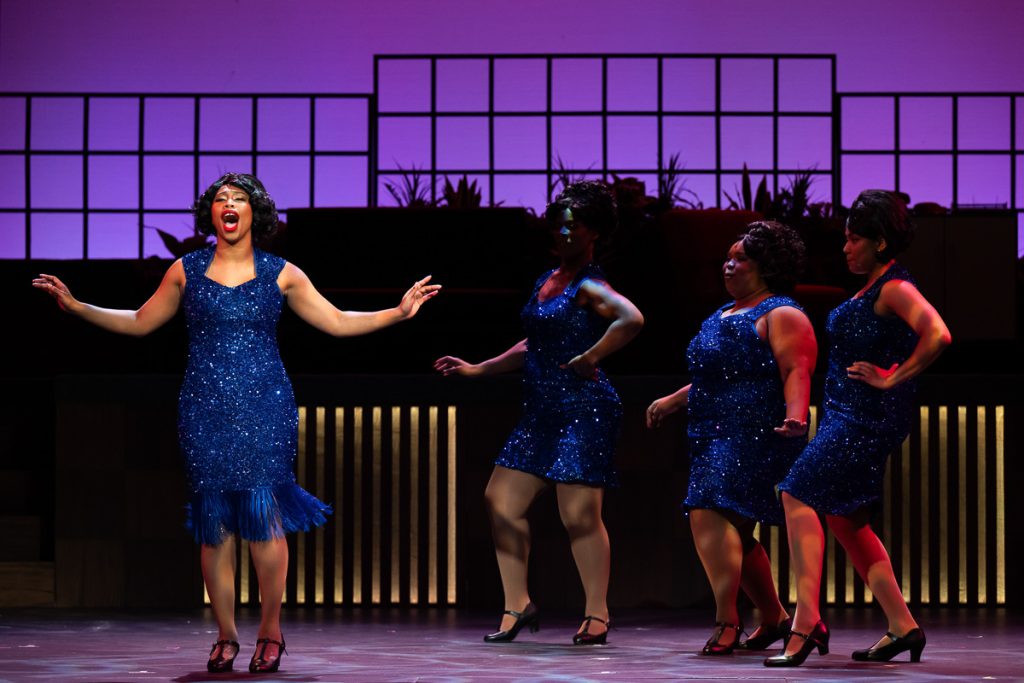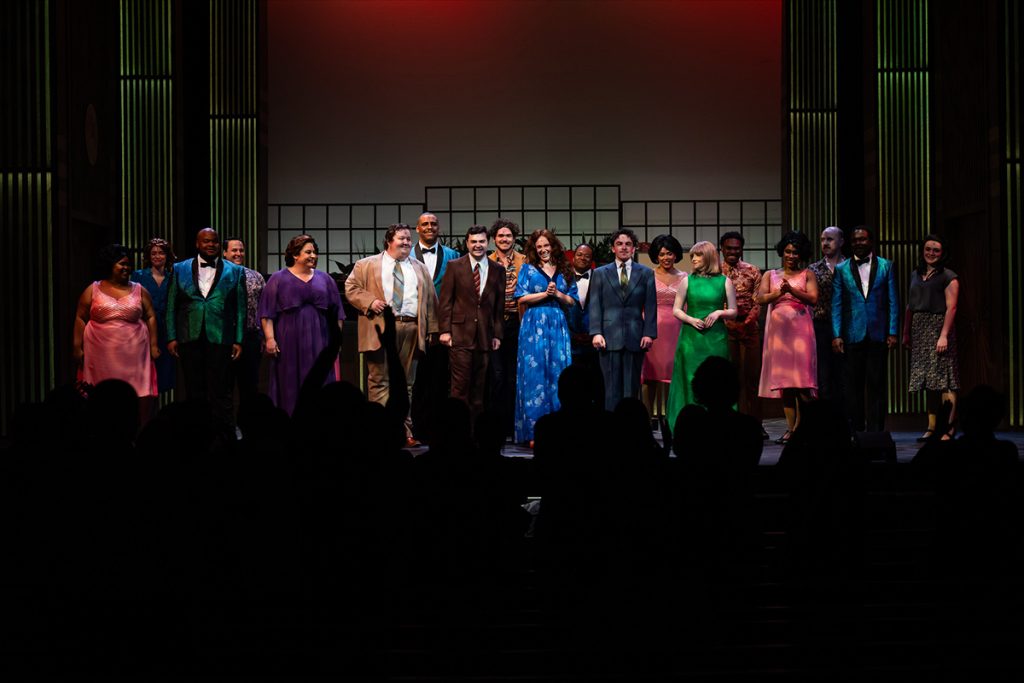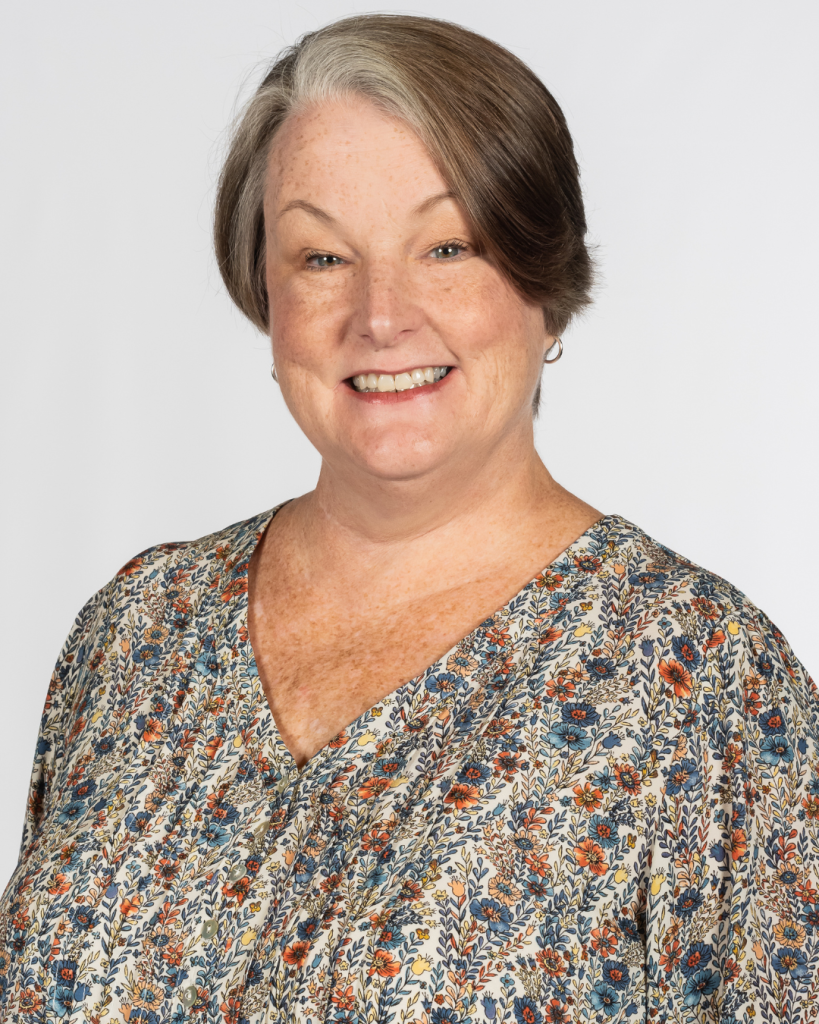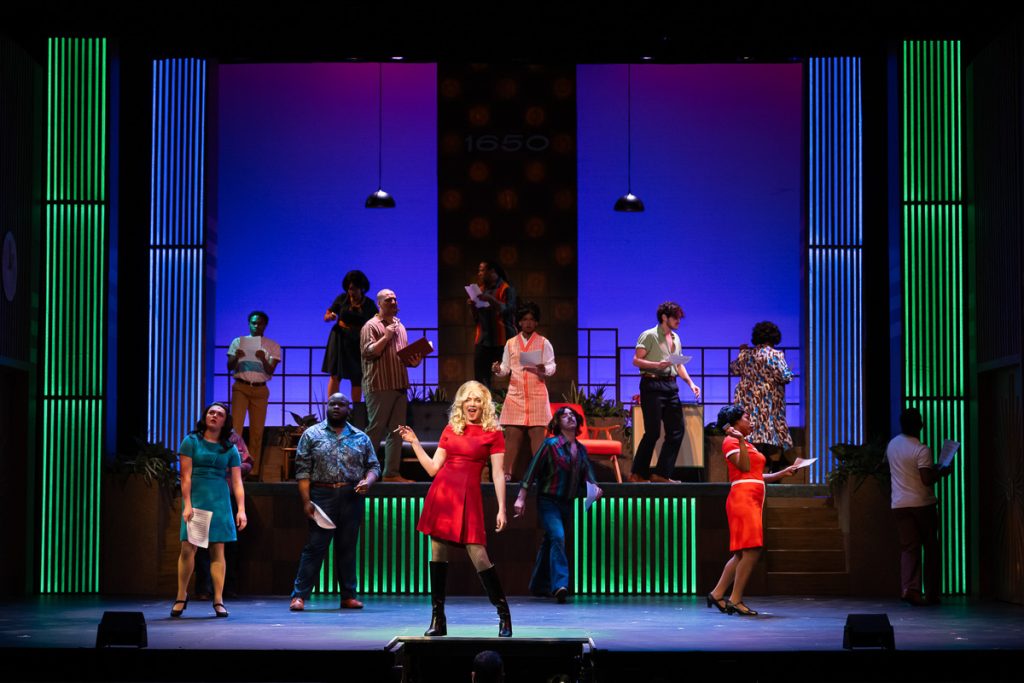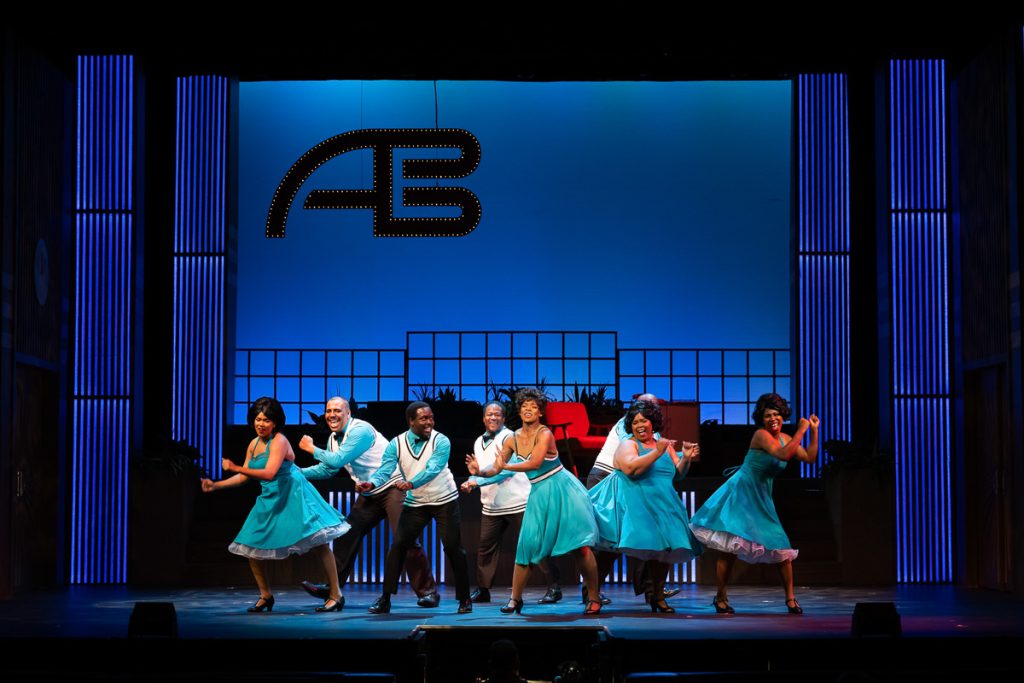How did you approach designing the lighting for “Beautiful: The Carole King Musical” to enhance the storytelling and evoke the mood of the production?
One of the bigger challenges of this show is that it’s based on real people in a very specific time period. You can go out and google “Carole King’s 1650 Office” and find tons of images about Carole King’s life. I needed to find a way to honor the history of Carole King and still be a creative collaborator within the production. We’re working with real places and real people, but it’s still theatre. We’ve still got to be creative and flexible.
Beautiful has a big challenge of shifting from Carole and Gerry writing songs in their office to the full-blown performance by groups such as The Drifters, The Shirelles, The Righteous Brothers, or Little Eva. I tried to separate these locations with color palettes and lighting angles: I keep Carole and Gerry’s office lit with vintage feeling ambers and oranges with most light coming from 45 degree angles from the front. I think it’s evocative of the lighting in the historic photos that you can find online. Below you’ll see a picture of Carole and Gerry in their office alongside a photo from the show set in the same location.

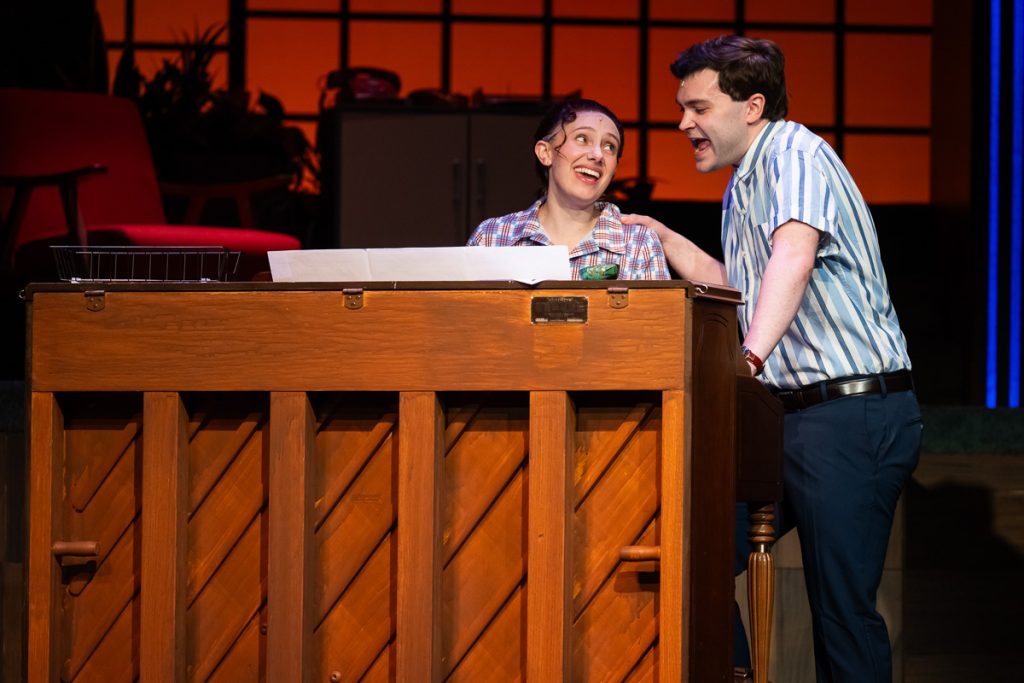
The way the bodies are lit in the office is very similar to the way I tried to light the bodies in the production. Notice that the color palette is rich oranges and amber tints to help create a vintage feeling and compliment the warm tones of the furniture.
In order to separate the office from the performances, I chose to use more isolation of singers and sculptural lighting. There’s a lot more light from the sides and back of the performer, making the look more stylized and concert-like. I tried to use period-specific lighting techniques that you could see in concerts from that time period, and I had to imagine how lighting designers at that time might design if they had access to today’s technology too. I wanted to be faithful to the time period, but with a few modern conveniences! A lot of the colors that I pulled for the performances came directly from the album covers of the songs when they were first released. For example, the 1961 album cover for The Drifters’ Some Kind Of Wonderful had lots of oranges and blues that I pulled directly into the lighting design:

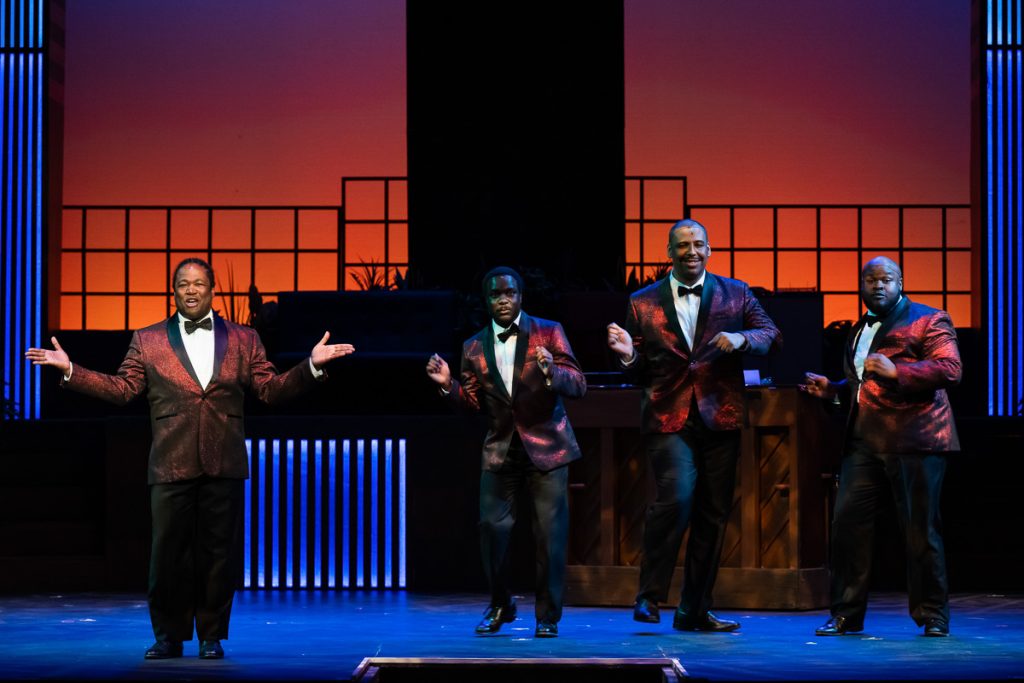
It’s a balancing act of office Vs performance, and there are even times in the show when the main performance is in the office. The music will tell you how far you need to go with the lighting, and it’s my job to make sure I’m listening and respecting it.
Can you discuss any specific collaborations or inspirations that influenced your approach to designing the lighting for “Beautiful”?
There was a lot of collaboration between all of the designers in Beautiful. We started meeting about the design several months ago to make sure we’re all coming up with a cohesive final product that all works together. I’ve worked with scenic designer Seth Howard, props designer Aline Toloto, sound designer Luke Walchuk, and costume designer Hayley O’Brien before, and we’ve developed a great rapport. We’ve gotten good at building off each other, and I really enjoy working with them.
This show has a LOT of lighted scenery. Seth and I wanted to make sure that we had some lighting integrated into the set so we could have something transformative to get us from the offices to the performances. One of our solutions was the large columns in the set. We chose to turn them into light boxes willed with color-changing LED tape to help shift the color palette and give the audience some eye candy. Beautiful has 16 separately controlled light boxes and over 300 feet of LED tape in the production.
Another fun collaboration with scenery was the large “1650” wall at the back of the set. We thought it would be cool to turn it into a vintage wall of lights that could flash along with the song. Seth and decided that each of the dark squares in the checkerboard pattern should have a light in it to give us an “audience blinder” look that was everywhere in the concerts of the era (and is still in use today). We worked closely with our scenic painter, Brandon Barker, to make sure the lights were totally hidden when turned off, while keeping the look of the lamp and reflector when they were on. The wall consists of 36 lights spread across six circuits and lots and lots of cable.

I am always making sure that the colors that I choose are complimentary of the scenery, but especially the costumes. I regularly go to the costume shop to feel the fabrics, look at the colors, and check them under lights. I do my best to make sure the light on the characters costumes and skin tones are flattering in several ways. I can make things more vibrant by highlighting costumes and skin with certain colors, I can help them pop out of darker backgrounds with the angle of light, and I can use textures to help give the costumes a little more depth – especially if they have sequins! One of my favorite costume moments is towards the end of the first act when The Righteous Brothers sing You’ve Lost That Loving Feeling. They’re in dark suits against darkly lit scenery, so I used a string back light to highlight and separate them from the background. I also really love the blue-green color palette that goes with their deeper voices. It’s a great costume and lighting moment.
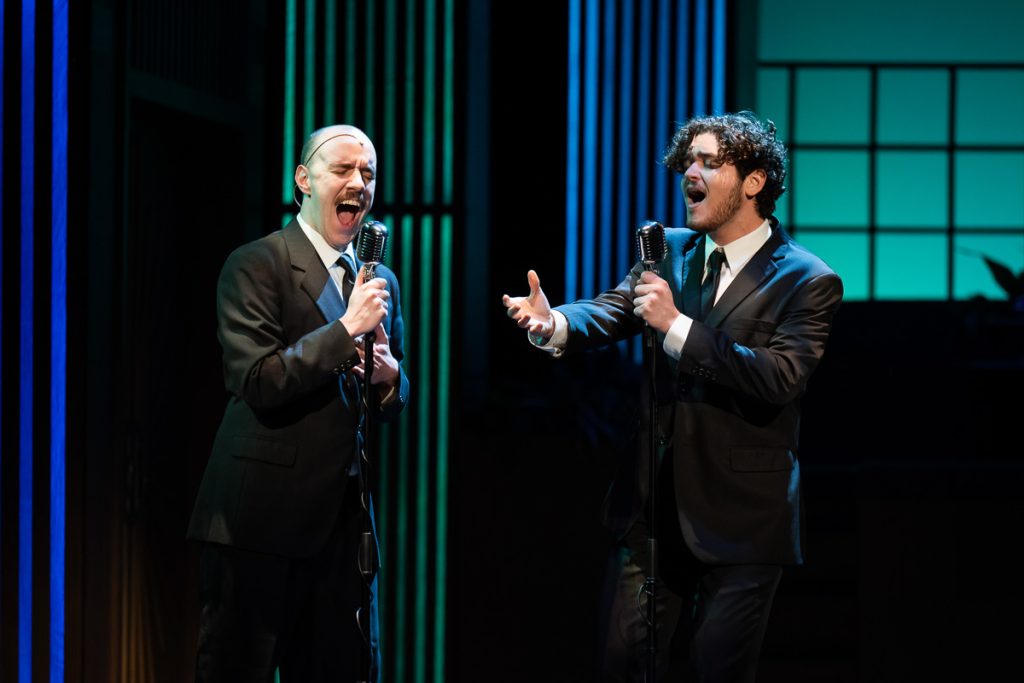
Lighting design often helps to establish the passage of time and transitions between scenes. How did you approach creating seamless transitions through the lighting?
Scene changes can absolutely kill a production if you’re not careful. You’ve lost half of the audience the minute a scene change goes over 10 seconds. The production staff works very hard to make sure that the elements can get on and offstage as fast and elegantly as possible. Director Marybeth Clark and I are really big fans of always giving the audience something interesting to look at while scenery is changing. Sometimes it’s a pulldown to one or two actors having a moment while the world shifts around them, or sometimes it’s turning out all of the lights except the columns and sky upstage. We always want it to be visually interesting, speedy, and emotionally linked to the upcoming scene.
How did you work with the director and creative team to determine the timing and placement of lighting transitions to highlight key moments and enhance dramatic tension cues?
With musicals, I stary by listening to the music over and over. It’s playing when I’m at home cooking, in the car driving around town, it’s playing in my earbuds when I’m at the gym – it’s always playing. I try to get as familiar with the music as much as I can because it will tell you when the changes in the lights need to come. Sometimes it’s obvious, like at key changes or orchestra hits, but other times it’s much less obvious, like with character intention changes or moments of reflection. After I spend time with the music, I go straight to the script. The playwright’s intentions are typically spelled out for you: things like blackouts, lightning flashes, and scene changes are right there. I then start to listen to the script in rehearsals. The spoken word has a rhythm like music. There are always themes, mood changes, repetitions, dynamics, and rhythms. The way they play to the text can determine the speed of the lighting cues, moments to highlight, and help to establish the tone of the lighting.
The creative team and I always make discoveries in rehearsals where we see character placements, gestures in movement and dance, new stuff in the orchestrations, and more. The designers, director, and stage manager all sit down to have what is called a “paper tech.” This is when we all sit to discuss the design aspects of the show and how they are sequenced in the script. It helps us to make sure that all of our individual needs for the design are being met before we get into tech rehearsals. There is always time to add things as we see fit along the way. Sometimes we just need a light shift or a special light on a piece of scenery that we didn’t see until we run the show in the theatre with all of the tech elements in place.
Carole King’s music is known for its emotional depth and intimacy. How did you use lighting to create a sense of intimacy during quieter moments and musical performances?
There are lots of intimate moments in the show, and I always want to make sure that the audience feels like it’s just them and the characters onstage. For example, there’s a beautiful ballad in the second act that Cynthia Weil and Barry Mann sing. As the music changes, I pull more and more light out of the world around them. By the end of the song, we should be totally focused on the couple as they sing “Walking in the rain, and wishing on the stars up above, and being so in love.” We go from the entire office being lit to Barry and Cynthia in spotlights at the piano through the course of the song – it’s almost like a camera zooming in.
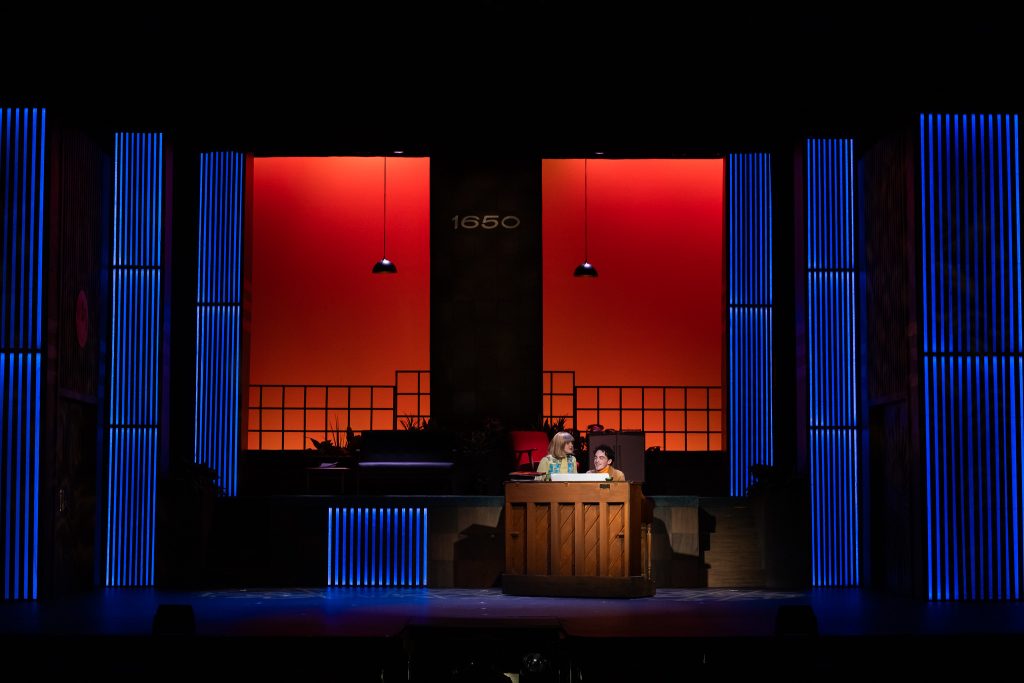
Featured: Charleston Stage Resident Actors Kyra McKillip as Cynthia Weil and Brendan Considine as Barry Mann perform Walking in the Rain in Charleston Stage’s Beautiful: The Carole King Musical. Reese Moore Photography.
What do you hope audiences will take away with them after seeing Charleston Stage’s production of “Beautiful” and experiencing your wonderful designs on stage?
I really hope that audiences will see the through-line of Carole’s experiences and how they directly translate to her writing. I tried to make sure that the lighting was supportive of her emotions and intentions, and hopefully they’ll help the audience feel the deep sentiments and passions as Carole. It’s a really remarkable story with music that we all know and love, so it’s really great to see the stories behind each song.
BEAUTIFUL: THE CAROLE KING MUSICAL is running at the Historic Dock Street Theatre from April 10-28, 2024. Click HERE to book your seats.

CALEB S. GARNER (Lighting Designer)
Caleb is a lighting and sound designer based in Charleston, SC. A North Carolina native, Caleb received his B.A. and B.F.A. from Catawba College in Salisbury NC, and his M.F.A. from the University of Southern Mississippi. Garner’s designs, ranging from concerts to ballets to musicals to plays have earned him eight regional and national design awards. Caleb has been a featured designer from New York to Mississippi, designing in the Northeast, Midwest, East Coast and Deep South. Caleb enjoys turning large pieces of wood into smaller pieces of wood (sometimes mistakenly called furniture), screaming with students (often recognized as teaching), and playing with things that spark and smoke. Caleb currently serves as the Resident Lighting Designer at the Charleston Stage Company and serves as an adjunct lecturer at the College of Charleston.


